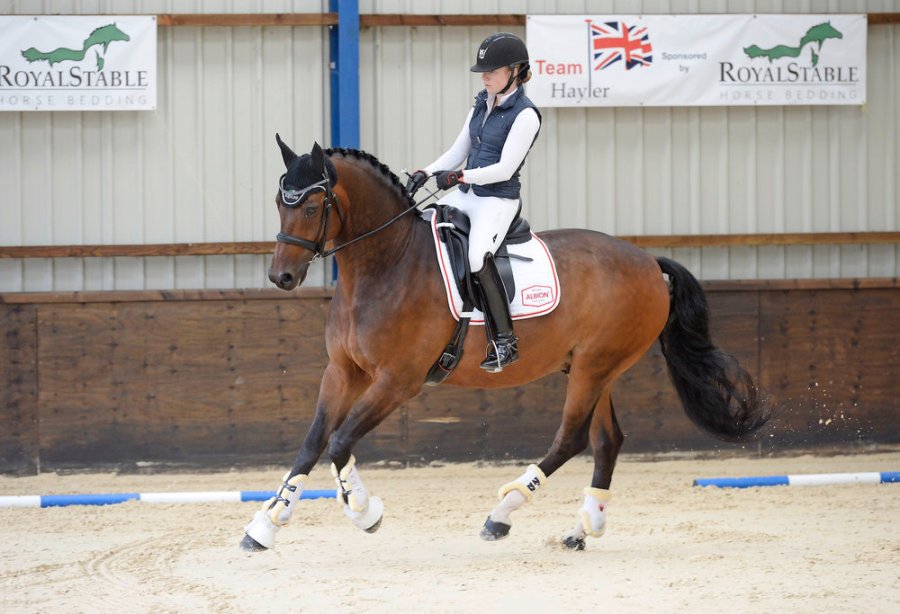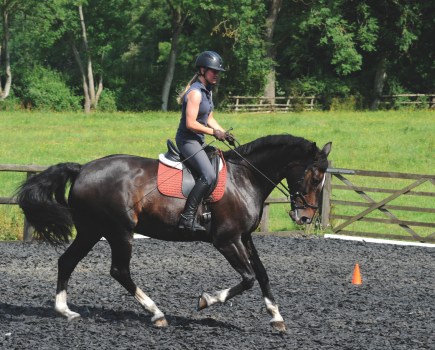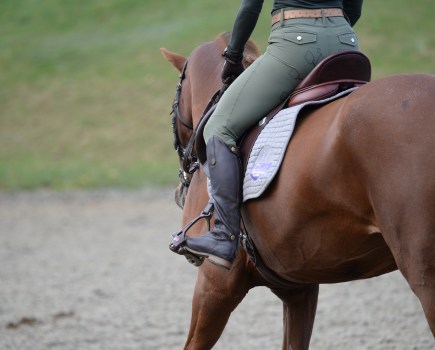This simple exercise is ridden on a 20m circle in canter. You’re going to ride your horse forward for a few strides before collecting the canter.
Why ride it?
This is often used as the first stage of teaching your horse collection. Riding it on a 20m circle helps you perfect it because the constant bend of the circle encourages your horse to step through with his inside hind leg. It’s also a great way to learn to use your seat and body position to steady your horse.
Avoiding the pitfalls
If you use too much rein to collect your horse, you’ll block his forward movement and interrupt the rhythm. He may also become heavy in the contact and tip onto his forehand, making it more difficult for him to show the change in the pace.
How to ride it
On a 20m circle establish a good, relaxed working canter, making sure you’re riding an accurate circle.
Ask your horse for medium strides for approximately half a circle by relaxing your seat and nudging with your inside leg to ask him to move forwards.
Close your thighs and tighten your tummy to ask your horse to collect his canter for three to four strides.
Relax your thighs and tummy to allow your horse forwards again and ask for medium canter again.
Help him stay balanced
Essentially the same as the first exercise, but you’re riding it down the long side of your arena and adding in a 10m circle. If your horse’s canter isn’t balanced enough, ride it in trot instead.
Why ride it?
The benefits of riding this exercise are similar to the first. It teaches you to use your seat as an aid for collection, but you have the added test of having the control and balance to ride a 10m circle at the end of the long side.
When ridden correctly it will improve his engagement and suppleness.
Avoiding the pitfalls
If you try to ride this exercise and rely on using your reins to collect your horse and to turn him on to a 10m circle, you’ll find your horse will become unbalanced and heavy in your hand, making it difficult to ride your circle and you’ll probably loose all impulsion too.
How to ride it
As you ride out of the corner onto the long side, make sure your horse is straight in his head and neck. Looking down the long side, squeeze with your lower legs, asking your horse to move up a gear to medium canter. As you approach the final marker on the long side, collect the canter by closing your thighs against your saddle and tighten your tummy. Ride a 10m circle by turning your upper body and using your outside leg and rein to help you ride an accurate circle.
Don’t miss the latest issue of Your Horse Magazine, jam-packed with training and veterinary advice, horse-care tips and the latest equestrian products available on shop shelves, on sale now.









